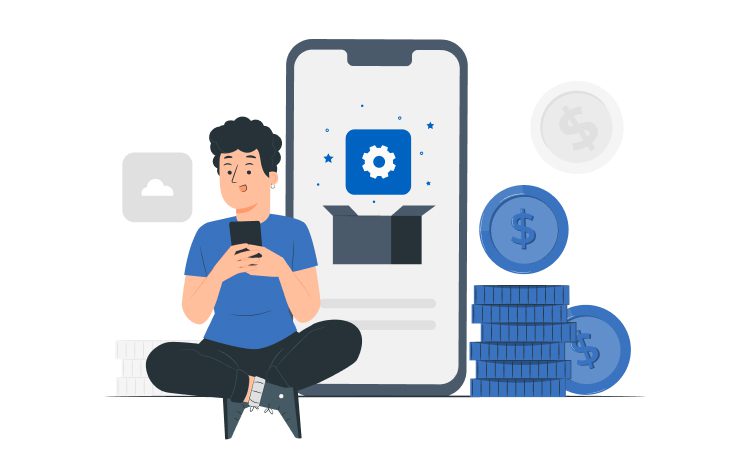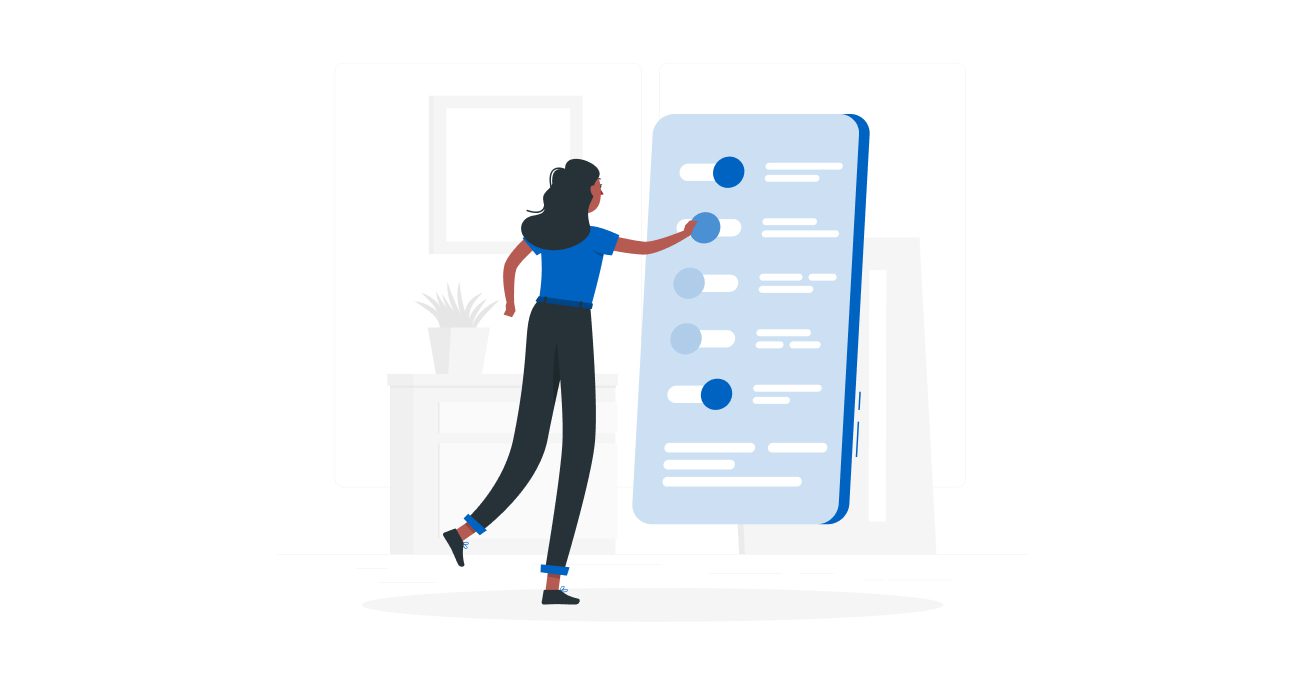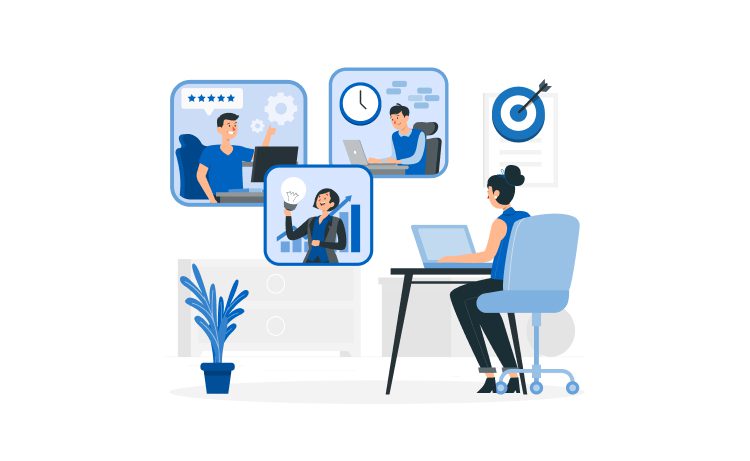
Custom Mobile App Development Guide [2025]: Features, Costs



The mobile app economy is growing every year. According to statistics from Global Digital, in 2022, people worldwide will spend about $170 billion on mobile apps and in-app purchases. Therefore, more and more business owners are getting their own smartphone apps. Due to the high competition in the mobile app market, not all of them are gaining popularity.

For a successful launch if it is native mobile apps or cross platform mobile apps, it is important to create an app that is really useful and needed by the consumer. But the cost of staffing a permanent development department is not rational. Why would a small company producing printed cushions need a whole staff of mobile app developers? In their case, ordering a project in a development studio will be much more profitable. In this article, let’s talk in detail about the services of hired programmers and the creation of mobile add-ons.
Content
According to statistics, every active smartphone user spends an average of five hours daily on their gadget. Most of this time is spent on installed apps. Therefore, custom mobile app development is a great option for attracting the target audience.
Global market research by Criteo says that the number of app sales is four times higher than on websites. Therefore, business owners are increasingly working with their audience on different communication channels. This helps generate revenue from multiple sources and allows them to keep their company in front of potential consumers.
Creating mobile add-ons allows you to present your brand on yet new platforms and accordingly attract new customers. Also, a convenient and easy-to-use app can increase customer loyalty.
Every entrepreneur has certain goals for the development of their business. To ensure that an app will only bring them closer to realization, analyze a few questions.

If the answer to all these questions is yes, then it’s time to turn your idea into reality and look for performers.
Some entrepreneurs during custom mobile application development use ready-made platforms to not miss their chance and quickly get a program on their smartphones. Alas, not all these platforms are the right solution for this or that business. As a consequence, there is a need to start from scratch and spend time and money from the budget again. You can avoid such a scenario by using custom mobile app development services.
Many firms practice creating and managing a turnkey project. In this case, the package of services for mobile application development contains the following items:

You can apply to development companies not only with a request to create a project from scratch but also to help implement individual functions for a mobile app.
To fully understand what kind of development you need, consider in detail the features of projects for different operating systems. We distinguish two ways:

Mobile hybrid add-ons are an option that removes the app’s language choice issue. A cross-platform project also has a low development cost, but it has its drawbacks. The app may respond to the user with delays or be slow to perform its functions.
Native development has no performance issues and is characterized by fast response times. Custom Android app development is most often done in Java. But a new language, Kotlin, has recently gained popularity.
Custom iOS app development requires knowledge of Objective C. It is also needed to support old programs. And to write new ones, more and more programmers are switching to the Swift language.
Note that if you need to maximize the derivation of your app for mobile devices, you can use the C++ language. It is also sometimes used to write apps for both operating systems.
To save money, you can turn to freelancers. But creating an effective app requires a whole staff of workers. Hiring a separate person for each step can be challenging to find and communicate with. In the course of the work, constant coordination is necessary, both between the specialists and with the customer themselves. In addition, there is the risk of encountering a freelancer who will refuse to cooperate in the middle of the project or will not perform some of their tasks. In such a case, not only money but also time is lost.

If you hire a team, a full package of services to create a simple program from scratch will cost $3,000 to $4,000. In this case, the development studio will deliver a typical project in a month. Freelancers will need about 2 months for this. In addition, the cost of their services depends not only on their skills but also on their geographical location. Thus, a specialist from Eastern Europe will take an hour of work on a mobile add-on starting at $30. An American programmer with the same knowledge will charge twice as much.
On this basis, many entrepreneurs prefer an already cohesive hired team. Although more expensive, cooperation with an outsourcing company is much more reliable.
The signing of the contract is intended to secure both the customer and the hired workers. Fruitful cooperation is built on transparent conditions and mutual understanding. That is why introductory meetings and briefs with mobile developers are held first. The main ideas, product requirements, technology stacks, deadlines, and other details are discussed during discussions. Then a contract is drawn up and signed.
Development companies practice cooperation under several types of contracts:

The signed contract is a reliable support for both parties. The customer receives a full-fledged product, which will enter the market under the responsive guidance of professionals. Developers have guarantees that their work will be rewarded per the work performed.
It’s interesting: read an article about the cost of real estate app development.
Let’s talk about what the process of custom mobile application development consists of and why you can’t skimp on these steps.

Once you have found the mobile app development company and gotten to know them, you need to outline the main goals and objectives of the future project before starting any mobile application development services. Everything you want to see in your app should be spelled out in terms of reference (TOR). A well-crafted document will help your team understand more clearly what you expect from them.
The primary purposes of writing the TOR:
The project documentation is divided into logical blocks:
The terms of reference is a direct guide to action for specialists. The clearer it is, the faster they “grab” your idea and go in the right direction. Trying to write it yourself, not having enough knowledge in this industry, means putting the whole project at risk.

You can easily and simply state your thoughts, ideas, and wishes in the language of your own business. Still, converting them into technically understandable instructions can be very difficult. That is why technical writers and analysts are brought in to write competent and readable TOR. This is the best option for those far from IT terminology who want to convey their ideas clearly.
Specialists get to work when the terms of reference have been created and agreed upon by both parties. Ordering a prototype is not always a prerequisite. But it is essential to understand that creating a program for a smartphone is not a process that can be “rewound” and started all over again without incurring any additional costs.
The prototyping stage helps to avoid huge costs in case of mistakes or miscalculations in work, as well as to finally eliminate all possible misunderstandings.
Prototyping means creating an app layout with a prescribed structure, interface, and features. Custom mobile app development company pays special attention to this stage. After all, the main task of the layout is to show you what the project will ultimately look like.
In theory, this stage looks simple enough. Specialists make a layout and make a preliminary version of the design. Then they show you their work. If the prototype is approved, it is handed over to the designers and programmers. In practice, however, everything is much more complicated. To orient ourselves in how collaboration at the prototyping stage proceeds, let’s examine each step in more detail:
After all the prototyping stages for the custom mobile app, a contract approves and supports the project. Developers and designers can get to work.
Minimum viable product (MVP) is a test version of a mobile app released to the market to test key factors.
The interaction of beta users with the early version will allow you to test working hypotheses, as well as detect problems or bugs and send the program for improvement. This strategy is chosen by those who want to see their product on the market faster and not overpay for troubleshooting. After all, it is much easier to make changes to a “raw” project than to redo a completely finished app.
MVP is created to reduce the time and cost of implementing an IT product. The test version is intended to test the overall “viability” of the entire project. It is released into the public domain and contains a basic set of functions. For example, MVP for food ordering will include only the catalog of dishes and the order form. Additional features – in-app payment and tech support chat – are implemented in the next stages of work.

The first feedback from users helps specialists to adjust their work and the product development plan in the future. It becomes clear which features need to be added or improved and which need to be discarded. Thus, the “first-timers” from your audience will help make those changes that will attract new customers.
An integral part of custom mobile app development is checking its performance on different devices. QA (Quality Assurance) specialists are in charge of this in the development studio. Before releasing the project, they check it on different devices and test all possible user interaction scenarios with the program. Thanks to this, you can be sure of the reliability of the resulting development.

A specialist tester is involved at every stage of the creation process, from idea to product release. This seamless test cycle prevents bugs or crashes in the app and improves the experience for your customers.
How is mobile product testing done? It doesn`t matter if it is enterprise mobile app development or the usual mobile app development process.
Testing is an essential part of custom app development. Many studios devote about 10-15 working days to testing to ensure the product is reliable. It is not worth saving at this stage because it determines how popular the product will become among consumers. The absence of errors and uninterrupted operation minimize the risk of removing the app from the phone.
Read more about custom web application development.
There are many different types of project commercialization. Each of them can bring profit to the owner of the product. It is only necessary to choose the right kind of monetization. This is done in the initial stages of development, along with a study of consumer goals and motivations.
To make the client want to download the app, it has to be relevant to them. Therefore, a marketing analyst is involved in selecting the right monetization strategy. They determine the appropriate type of commercialization by researching such characteristics:
Now let’s look at some basic strategies to help monetize your product during custom mobile app development:
In addition to the types of commercialization listed above, there are many different approaches for custom mobile apps. You can apply just one to your project, or you can apply several by combining them. Specialists provide advice so that you can objectively assess the feasibility of any method. Then, during the product creation, the IT wizards “fit” the codes and create the necessary features.
When all the cycles of custom mobile application development are complete, it’s time to present it to potential users, doesn`t matter if it is native or cross platform application. You can place apps on the most popular platforms: Google Play and App Store. You can also turn to private platforms such as Amazon App Store, Firefox Marketplace, and others.

Mobile app development teams are well aware of the requirements and rules that these stores impose on apps. That is why they help to make an accurate description, feature list, and other accompanying notes. Usually, the moderation process takes no more than two to three weeks before publication. delete abstract
At the same time Android has more than 74% of the mobile market, while iOS has only 25%. When creating a new app, it is important to consider these statistics. After all, one platform gives a higher profit percentage while the other provides greater audience reach.
The cost of developing a custom mobile app can vary widely based on complexity, development approach, and the features included. Basic apps can start from a few thousand dollars, while more complex solutions can go well into the hundreds of thousands. Cost factors include design complexity, development hours, and backend infrastructure requirements. Ready to bring your idea to life? Contact our managers today to discover how our expertise can transform your concept into a dynamic mobile application. Let’s create something remarkable together!
The average cost depends on the complexity of the program being created. The minimum amount for a simple app is about $3,000; for programs of medium complexity, it is $4,000 to $5,000; for the most complex programs, it starts at $6,000.
Here, too, everything depends on the level of complexity:
Yes, with the help of templates for custom app development and designers on the Internet. But the functionality, reliability, and visual appeal of such applications are many times lower than those of professionals.








